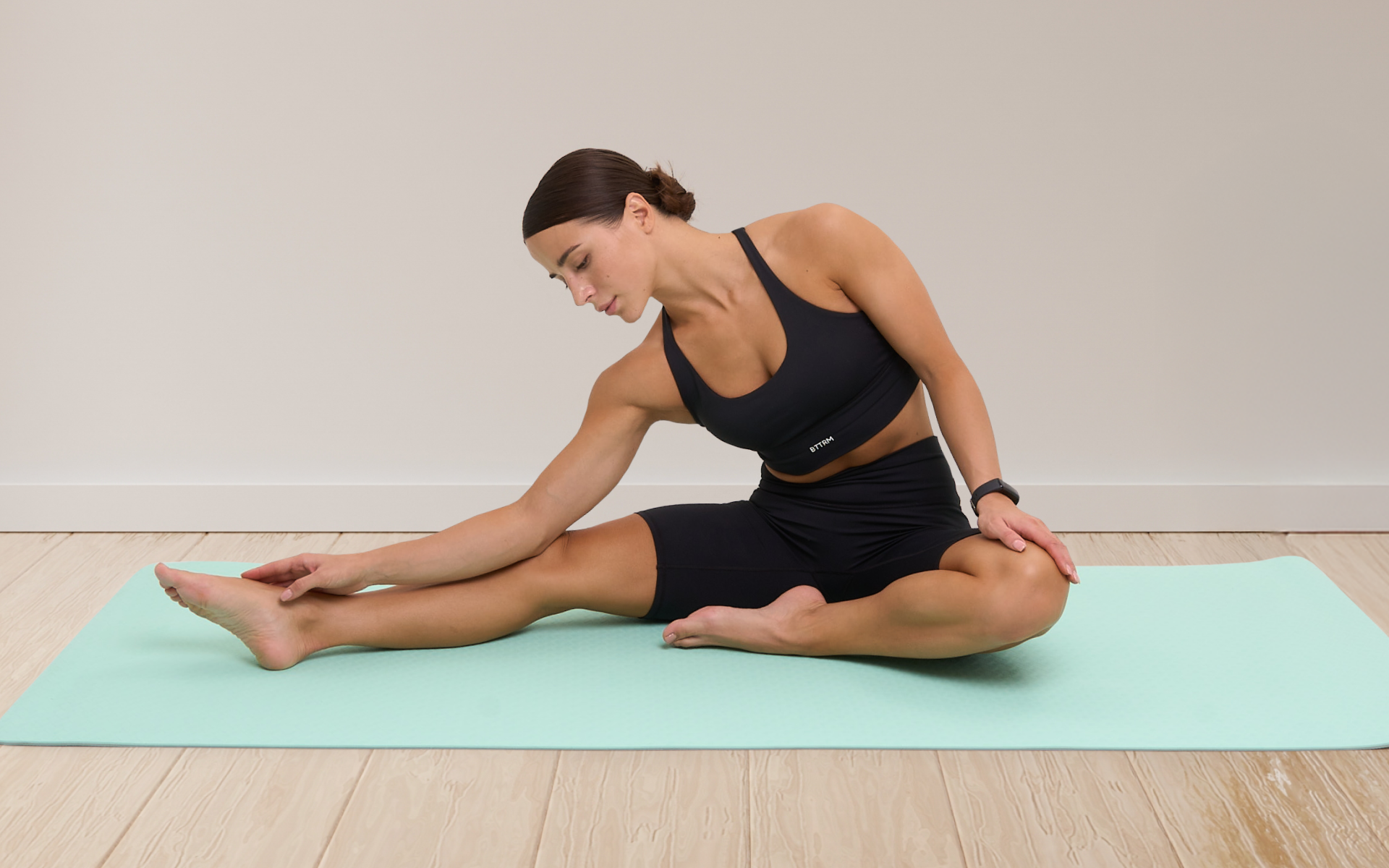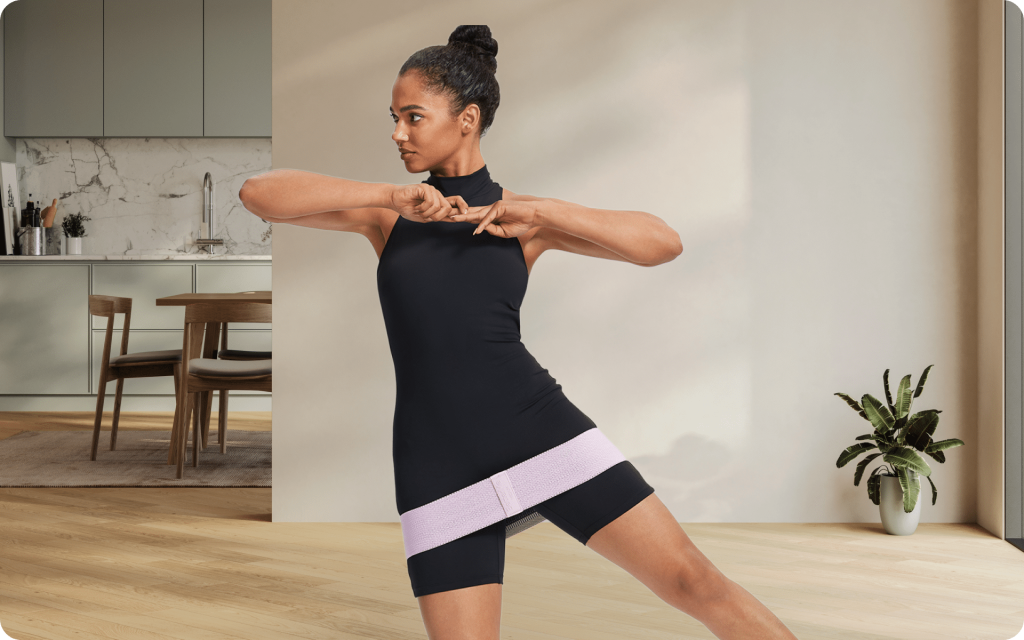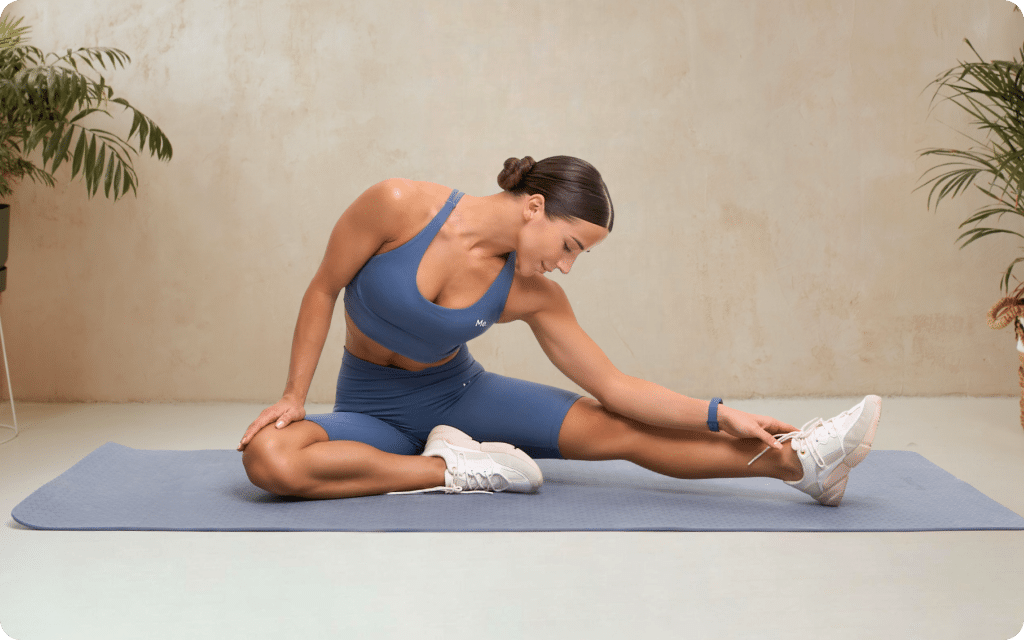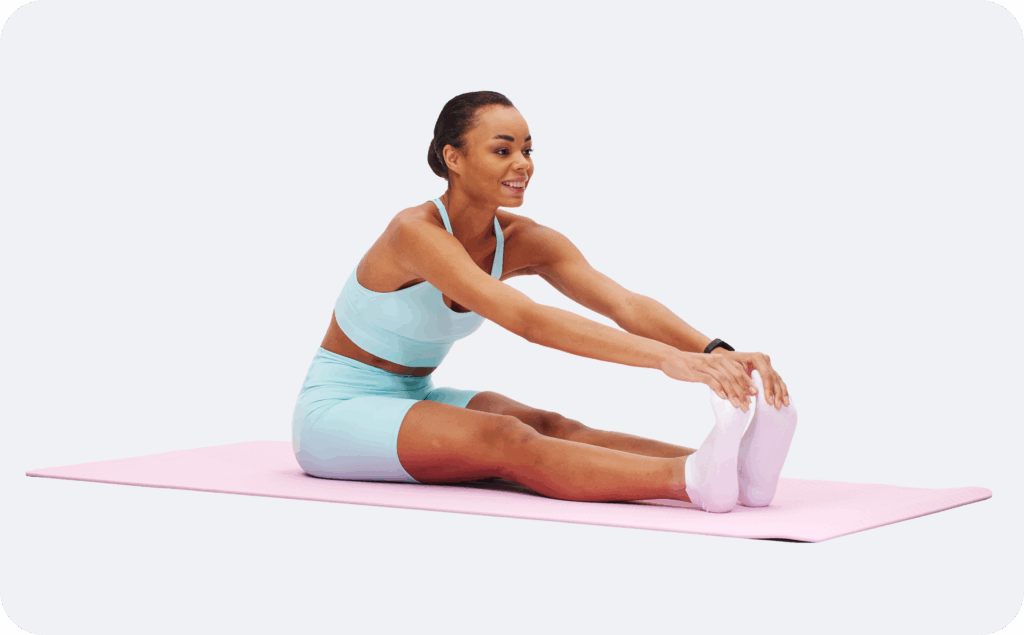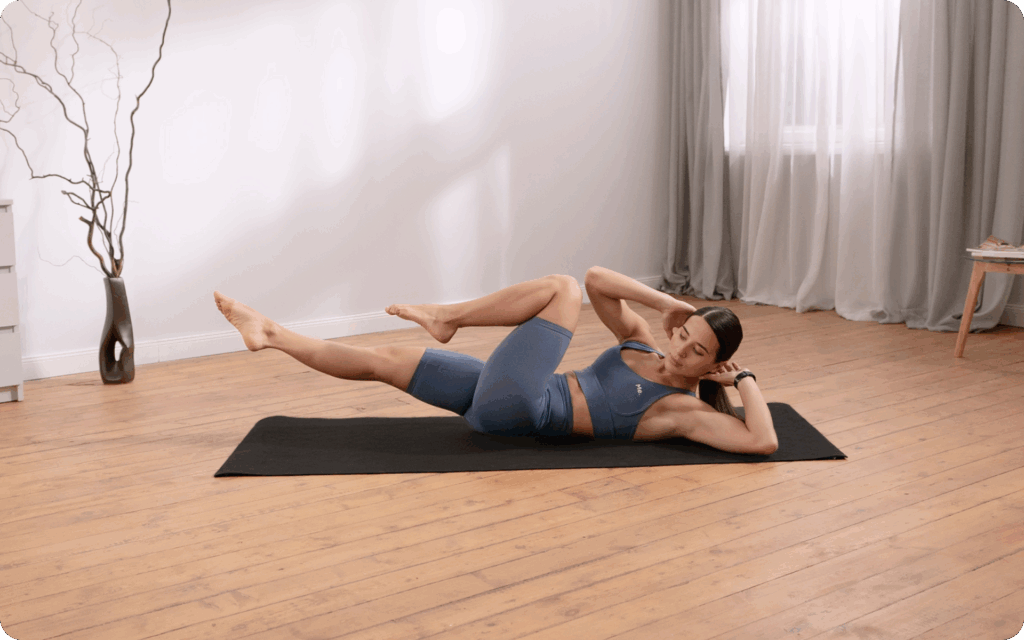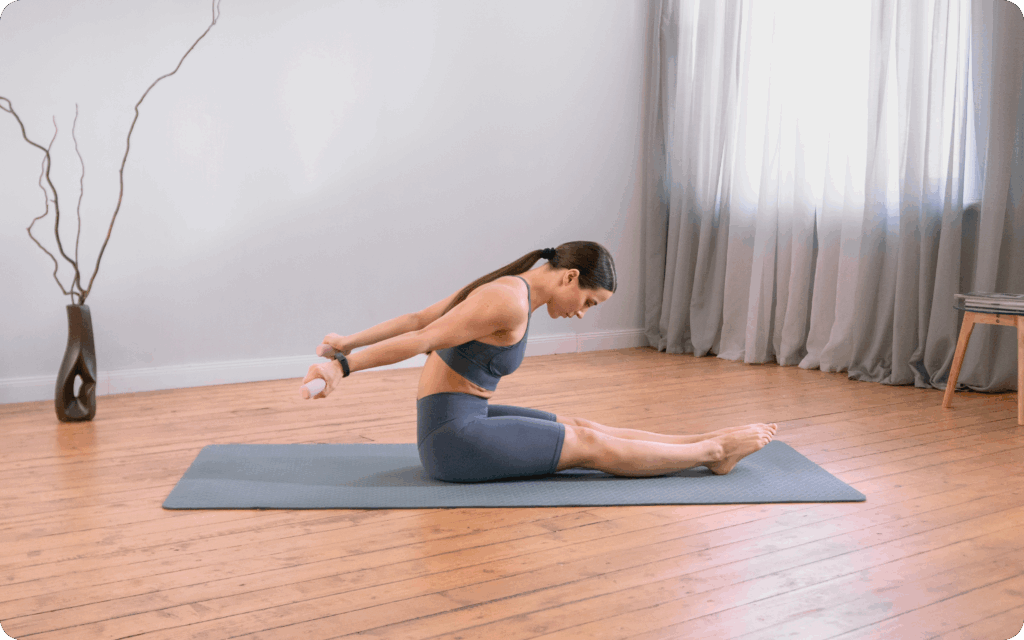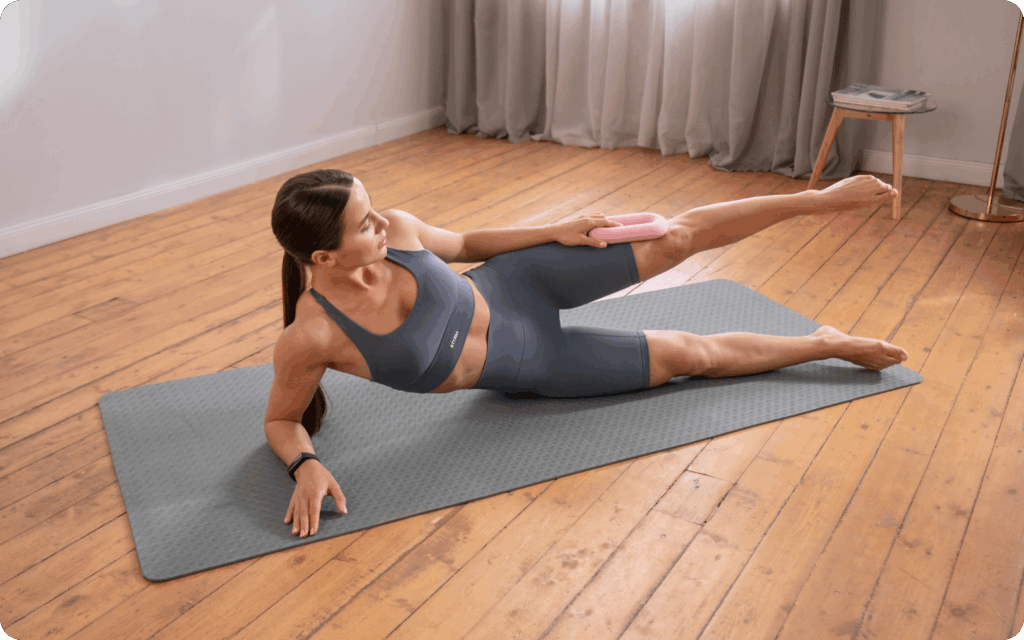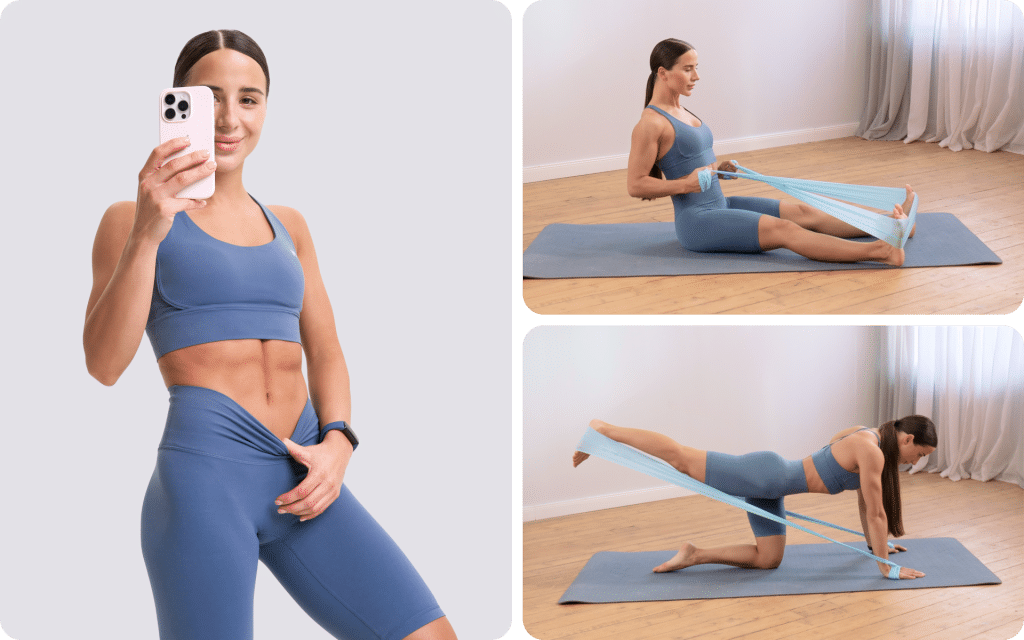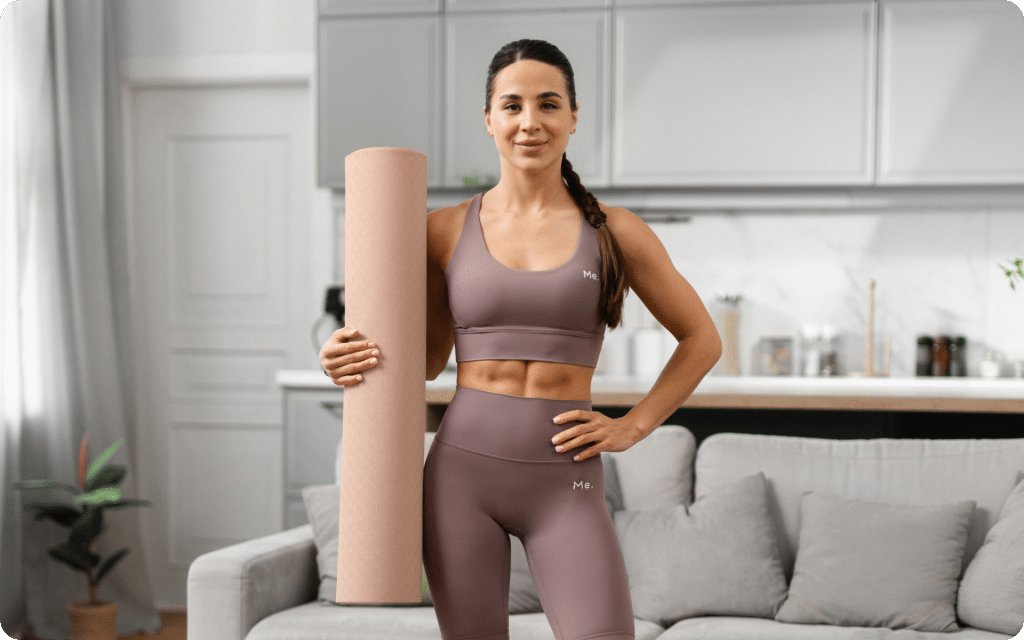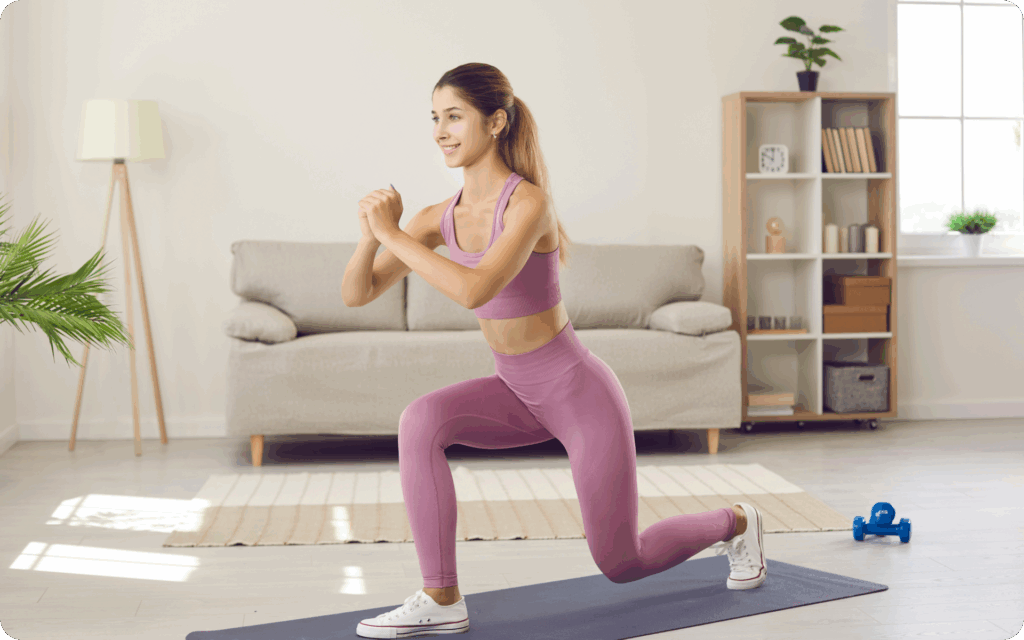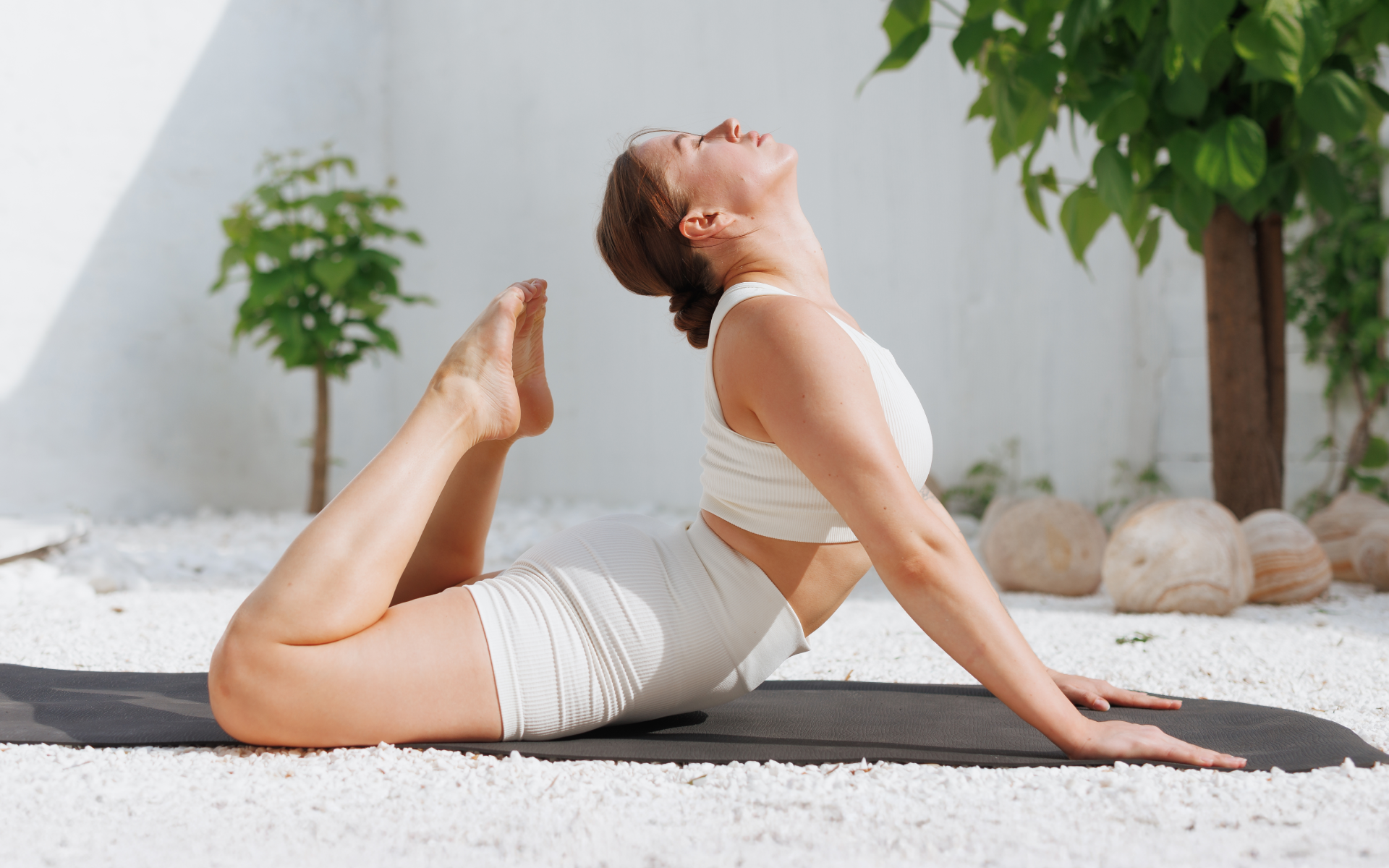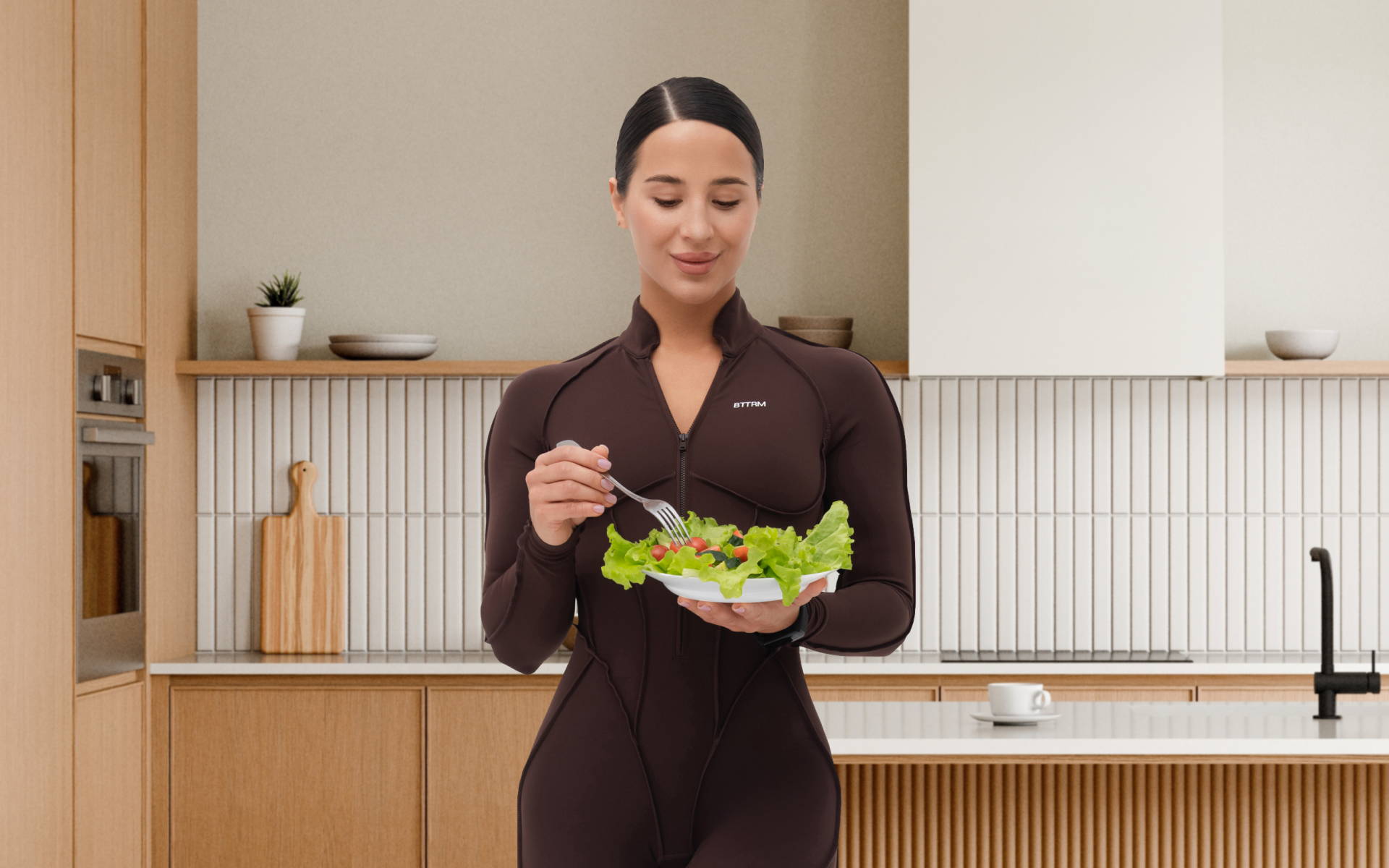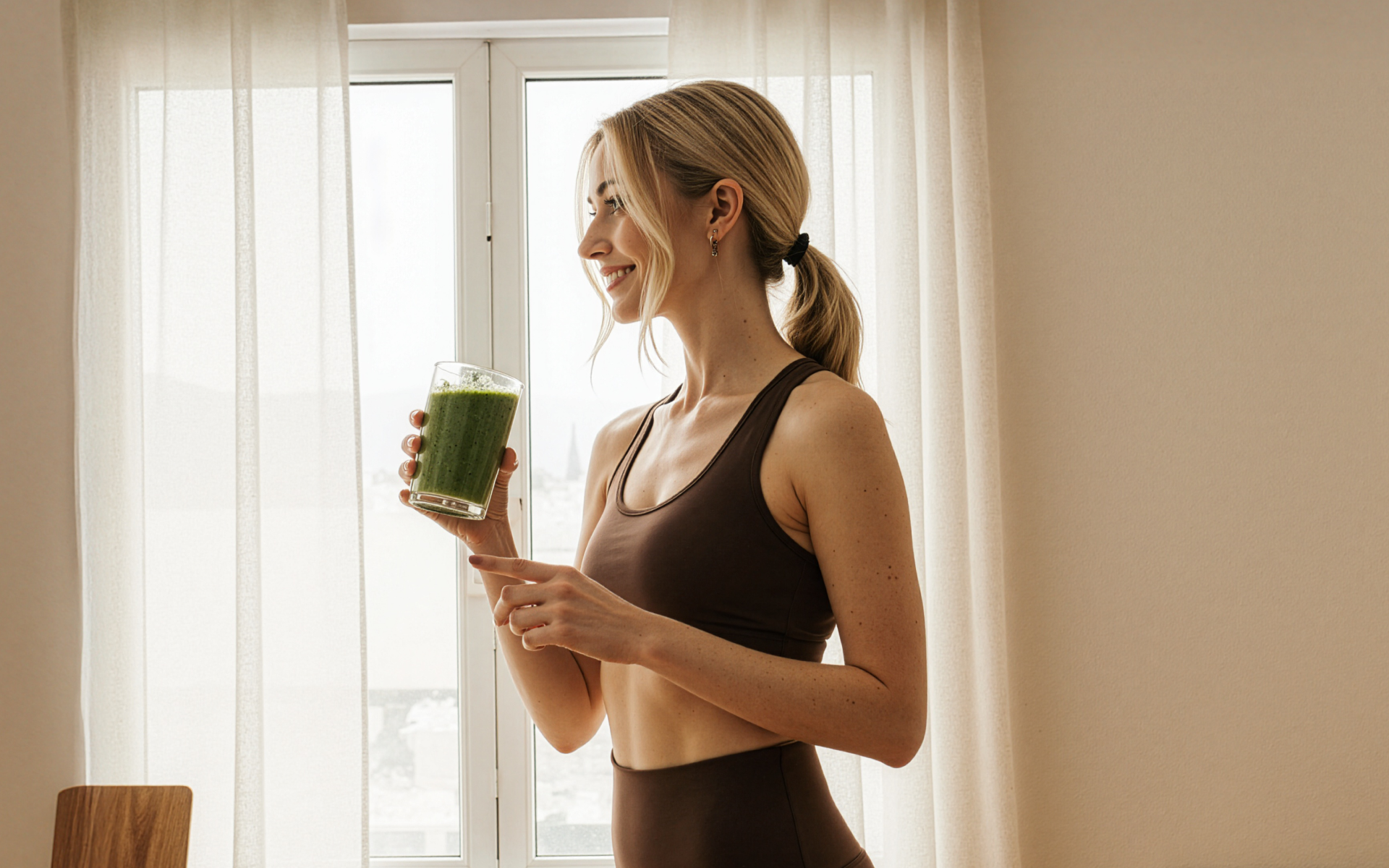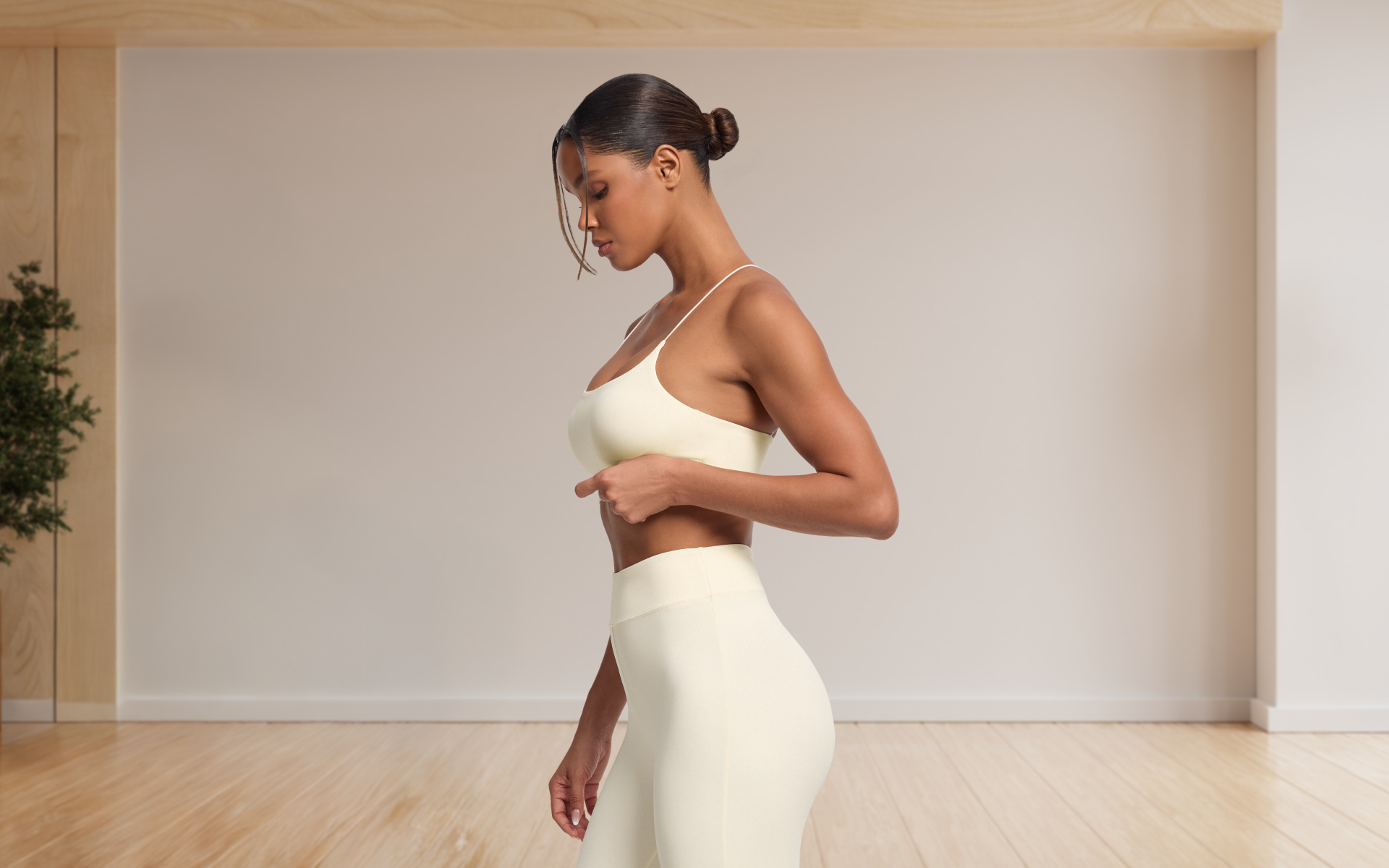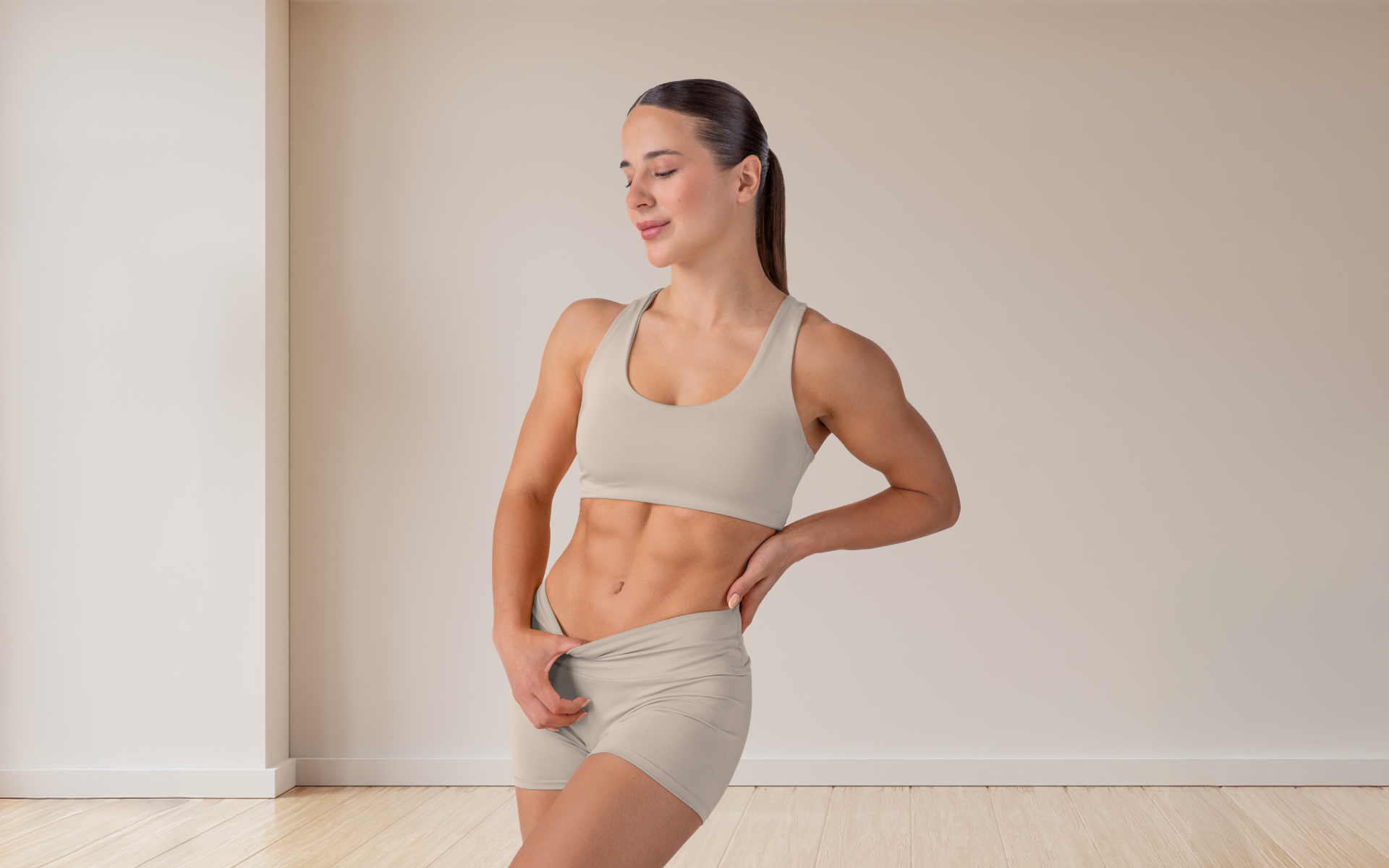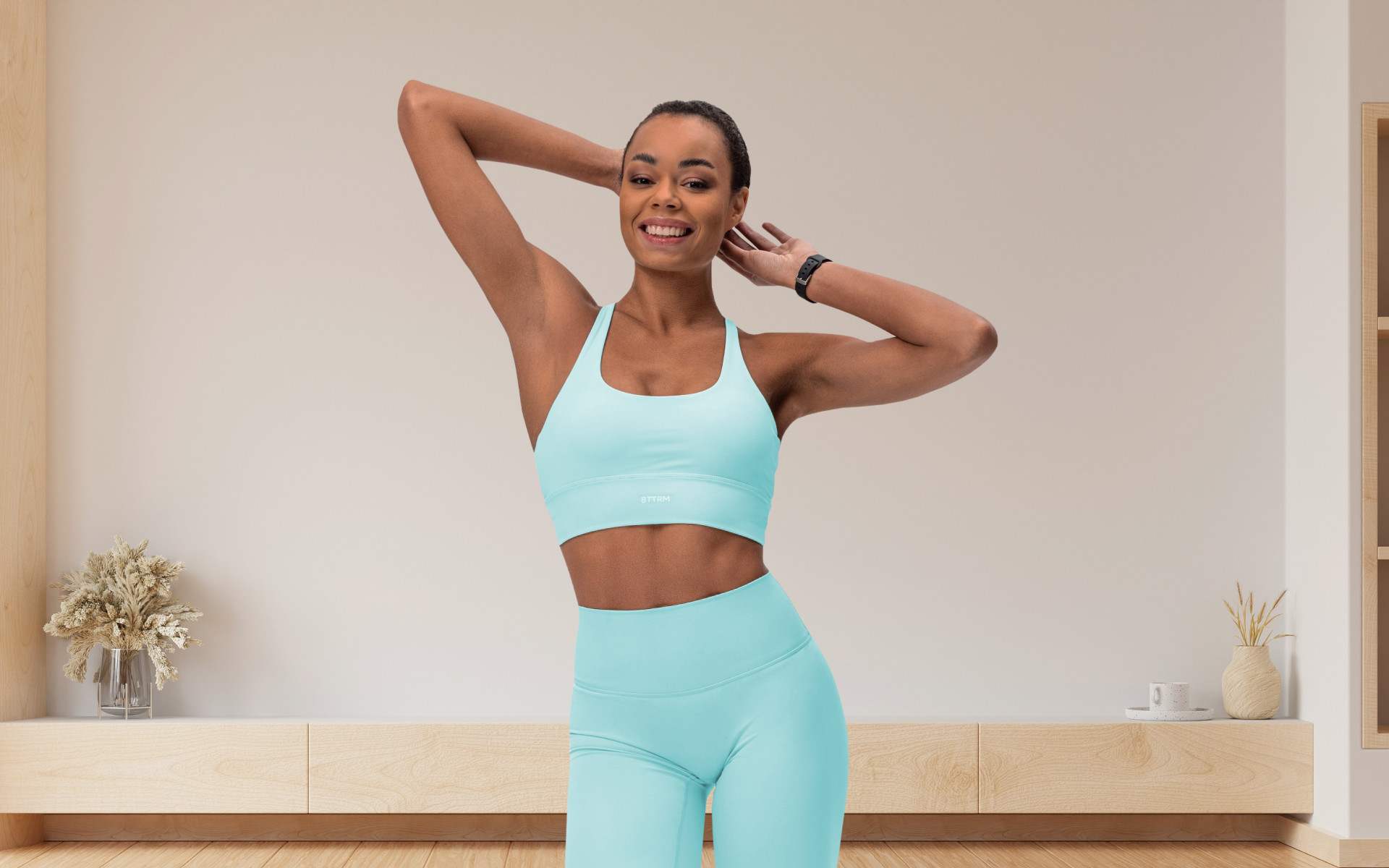Weight loss may not be the first thing that comes to mind when you think of Pilates, but this mindful movement practice offers unique benefits that can support all of your fitness goals. While Pilates alone won’t create the dramatic calorie burn of high-intensity cardio, it plays a valuable supporting role in a comprehensive weight loss strategy.
When it’s combined with cardiovascular exercise and proper nutrition, Pilates can play a powerful role in optimizing your body composition. More importantly for athletes and fitness enthusiasts, Pilates builds the foundation of strength, mobility, and body awareness that makes other forms of exercise more effective and sustainable.
Read on to find out how to lose weight with Pilates.
Is Pilates a Good Way to Lose Weight?
The short answer: Pilates can support weight loss, but it works best as part of a comprehensive program.
In 2022, a systematic review revealed that Pilates produces modest but significant reductions in body weight, BMI, and body fat percentage. This was found to be particularly pronounced in adults with overweight or obesity (1).
In another comprehensive study of 11 trials involving 393 participants, Pilates led to an average weight reduction of 2.40 kg. Even more interesting was that more pronounced effects were observed in longer-duration programs (2).
However, it’s important to keep in mind that traditional mat Pilates has a relatively low energy expenditure compared to more vigorous cardio activities. A typical hour-long session burns approximately 65-213 calories, depending on intensity and body weight (3). This means Pilates alone may not create the large calorie deficit many people need for significant fat loss.
Where Pilates excels is in the indirect benefits that support weight loss (4):
- Preserving lean muscle mass during calorie restriction, which maintains metabolic rate.
- Improving movement quality and reducing the risk of injury, enabling consistent training.
- Enhancing core strength and posture, which makes cardiovascular exercise more efficient.
- Reducing stress and cortisol levels (5), which can contribute to weight gain around the midsection (6).
For meaningful weight loss results, research supports combining at least 3 Pilates sessions per week with 150-300 minutes of moderate-to-vigorous cardio and a structured nutrition plan (3, 7). For more details if you can lose weight with Pilates, take a look at our prior publication.
Read more: Does Pilates Help You Lose Belly Fat?
What Type of Pilates Is Best for Weight Loss?
Not all Pilates is created equal when it comes to energy expenditure and metabolic demand.
Mat Pilates offers the most accessible entry point, requiring no equipment and focusing on bodyweight resistance (8). While they’re effective for building foundational strength and mobility, basic mat classes tend to have lower intensity and calorie burn (9).
Reformer Pilates provides variable resistance through spring systems, which allows for more challenging and dynamic movements. The additional resistance and instability can elevate heart rate and engage more muscle groups simultaneously, increasing both calorie burn and strength-building potential (10, 11).
Advanced and dynamic Pilates classes incorporate faster transitions, compound movements, and less rest between exercises. These sessions can approach moderate-intensity cardiovascular exercise while maintaining the focus of Pilates on controlled movement and body awareness (12).
BetterMe will shake off your mental funk, rid you of your energy-zapping habits, and help you sculpt the body of your dreams. Intrigued? Hurry up and change your life for the better!
For weight loss goals, prioritize:
- Classes with minimal rest periods between exercises
- Movements that engage multiple muscle groups
- Progressive difficulty that challenges your current fitness level
- Integration with other training modalities
Sample Mat Pilates Workout for Active Recovery
This workout serves as an excellent active recovery session between more intensive training days. It focuses on mobility, gentle strengthening, and movement quality, supporting your body’s ability to perform and recover from higher-intensity exercise.
Equipment needed: Mat or comfortable floor surface
Duration: 30-40 minutes
Frequency: 1-2 times per week on rest days
The Hundred
Purpose: Warm up the body and activate the core
Reps: 10 sets of 10 breaths (100 total breaths)
Lie on your back with your knees bent at 90 degrees and your shins parallel to the floor. Lift your head and shoulders, reaching your arms long by your sides. Pump your arms up and down in small pulses while breathing in for 5 counts and out for 5 counts. Focus on maintaining a stable torso while your arms move rhythmically.
Roll-Up
Purpose: Spinal articulation and deep abdominal strengthening
Reps: 5-8 repetitions
Begin lying flat with your arms extended overhead. Slowly curl up vertebra by vertebra, reaching toward your toes with control. Reverse the movement, rolling down with the same precision. This exercise improves spinal mobility while building core strength in a lengthened position.
Single Leg Circles
Purpose: Hip mobility and pelvic stability
Reps: 5 circles each direction, each leg
Lie on your back with one leg extended toward the ceiling. Draw small circles with the raised leg while keeping your pelvis stable. This movement enhances hip mobility while challenging core stability, which is essential for efficient movement in sports and daily activities.
Rolling Like a Ball
Purpose: Spinal mobility and balance
Reps: 6-8 rolls
Sit balanced on your tailbone, hugging your knees to your chest. Roll backward to your shoulder blades and return to the starting position without using momentum. This exercise massages your spine while challenging balance and coordination.
Single Leg Stretch
Purpose: Core stability and coordination
Reps: 8-10 each leg
Lie on your back in tabletop position. Extend one leg straight while drawing the other knee toward your chest. Switch your legs in a coordinated pattern while maintaining your head and shoulder position. This movement builds unilateral strength and stability.
Double Leg Stretch
Purpose: Full-body coordination and core strength
Reps: 6-8 repetitions
From tabletop position with your head lifted, extend your arms and legs away from the center, then draw everything back to the starting position. Focus on maintaining a core connection as your limbs move through space.
Spine Stretch Forward
Purpose: Spinal flexibility and hamstring length
Reps: 5-6 repetitions
Sit tall with your legs extended and your feet flexed. Slowly roll forward vertebra by vertebra, reaching your arms forward. This stretch counters the forward head posture that is common in both desk workers and athletes.
Swan Preparation
Purpose: Posterior chain strengthening and chest opening
Reps: 5-8 repetitions
Lie face down with your forehead on your hands. Slowly lift your chest, sliding your shoulder blades down your back. This movement strengthens the often-neglected posterior chain while opening tight chest muscles from daily activities.
If you’re curious about the 28-day weight loss challenge, check out our earlier article.
Read more: Ultimate Pilates Mat Exercises List: Do Your Core A Real Favor
How to Lose Weight with Pilates Sustainably?
Create a Caloric Deficit Through Combined Activities
Sustainable weight loss requires burning more calories than you consume. While Pilates contributes to this equation, you need to combine it with higher-intensity activities such as running, cycling, or strength training to maximize calorie burn. Think of Pilates as the foundation that makes these other activities more effective and injury-free.
Build and Maintain Lean Muscle Mass
Muscle tissue burns more calories at rest than fat tissue (13). Pilates helps preserve and build lean muscle, particularly in the core and postural muscles that support all other movements (4). This increased muscle mass boosts your resting metabolic rate, which helps you burn more calories throughout the day (14).
Improve Movement Efficiency
Poor movement patterns waste energy and increase injury risk. Pilates teaches optimal alignment and movement efficiency, which allows you to perform cardiovascular exercise with better form and less energy waste. This means that you can train harder, longer, and more consistently.
Manage Stress and Cortisol Levels
Chronic stress elevates cortisol, which can promote fat storage, particularly around the midsection (6). The emphasis of Pilates on breathing and mindful movement helps activate the parasympathetic nervous system, which reduces stress hormones that can sabotage weight loss efforts (15).
Enhance Recovery Between Training Sessions
Quality recovery allows for more consistent, high-intensity training. Pilates promotes blood flow, reduces muscle tension, and improves sleep quality – all of which are crucial for recovery (4, 16). Better recovery means that you can maintain higher training volumes without burnout or injury.
Address Movement Imbalances
Muscle imbalances limit performance and increase injury risk (17). Pilates identifies and corrects these imbalances, ensuring that all muscle groups work efficiently (18). This balanced development supports better performance in other activities and prevents the setbacks that come with injury.
Reasons why BetterMe is a safe bet: a wide range of calorie-blasting workouts, finger-licking recipes, 24/7 support, challenges that’ll keep you on your best game, and that just scratches the surface! Start using our app and watch the magic happen.
Develop Mind-Body Awareness
Sustainable weight loss requires awareness of hunger cues, movement patterns, and energy levels. Pilates cultivates this body awareness (19), which helps you make better nutrition and exercise decisions outside the studio.
Create Sustainable Exercise Habits
Weight loss requires long-term consistency. The low-impact nature of Pilates makes it sustainable for most people, providing a form of exercise you can maintain throughout life regardless of age or fitness level.
How Often Should I Do Pilates to Lose Weight?
For weight loss specifically, aim for 2-4 Pilates sessions per week as part of a comprehensive program. This frequency allows adequate recovery while building the strength and movement quality that supports other training.
Weekly structure for weight loss goals:
- 2-4 Pilates sessions (45-60 minutes each)
- 3-4 cardiovascular sessions (150-300 minutes total moderate-to-vigorous intensity)
- 2-3 strength training sessions focusing on compound movements
- 1-2 complete rest days for recovery
Remember, strength training guidelines recommend a minimum of 2 sessions per week for optimal health benefits (20). Pilates fits within this framework while providing unique benefits for posture, core strength, and movement quality. Our previous post goes into great detail about the weight loss motivation.
Why Am I Not Losing Weight with Pilates?
- You’re Not in a Caloric Deficit
Pilates only burns approximately 65-213 calories per hour (3), which isn’t enough for significant weight loss on its own.
Weight loss requires burning more calories than you consume (21). If you’re only doing Pilates without addressing nutrition or adding higher-intensity exercise, you may not be creating the deficit that is needed for fat loss.
- Your Nutrition Doesn’t Support Your Goals
Exercise is only one part of the weight loss equation. Poor nutrition choices can easily offset the calories burned in Pilates sessions.
To successfully lose meaningful weight, you need a structured nutrition plan that creates a sustainable caloric deficit while providing adequate protein to maintain muscle mass (22).
- You’re Not Progressive with Your Training
If you’ve been doing the same Pilates routine for months without increasing difficulty, your body has adapted and is no longer challenged. Progressive overload applies to Pilates too – you need to continuously challenge yourself with more advanced movements or increased resistance.
- You’re Expecting Spot Reduction
Pilates strengthens and tones the core, but it can’t specifically target belly fat. Fat loss occurs systemically throughout the body (23). While Pilates improves muscle definition and posture (which can make you look leaner), significant fat loss requires a comprehensive approach including cardio and nutrition.
- You’re Not Accounting for Body Composition Changes
You may be losing fat and gaining muscle simultaneously, particularly if you’re new to exercise. The scale may not reflect these positive changes in body composition.
Therefore, rather than just the number on the scale, focus on:
- How your clothes fit
- Energy levels
- Strength improvements
- Your Training Lacks Variety and Intensity
Basic mat Pilates classes may not provide sufficient stimulus for weight loss. You may need to incorporate more dynamic Pilates styles, reformer work, or combine Pilates with other training modalities to see significant results.
Cardio is generally more effective for immediate calorie burn and weight loss (24). Running, cycling, and other cardiovascular exercises create larger caloric deficits than Pilates. However, Pilates offers complementary benefits such as improved strength, posture, and movement quality that make cardio exercise more effective and sustainable in the long term. This commonly occurs when you’re gaining muscle while losing fat. Muscle is denser than fat, so you can appear leaner and more toned while maintaining or even gaining weight (25). This body recomposition is actually a positive outcome, as increased muscle mass boosts metabolism and improves overall health (26). Reformer Pilates and advanced mat classes with dynamic movements burn the most calories. Classes that incorporate cardio intervals, have minimal rest periods, and use additional equipment such as resistance bands or weights will increase energy expenditure. However, even high-intensity Pilates burns fewer calories than dedicated cardiovascular exercise. High-intensity interval training (HIIT), running, and cycling typically burn the most calories and promote fat loss (27). However, the best exercise for fat loss is one that you can perform consistently in the long term. For many women, a combination of strength training (including Pilates), cardiovascular exercise, and proper nutrition will provide optimal results (28).Frequently Asked Questions
Is Pilates better than cardio for weight loss?
Why do I look thinner but weigh more?
Which Pilates burns the most calories?
What exercise burns the most fat for females?
The Bottom Line
Pilates offers valuable benefits for weight loss when it’s integrated into a comprehensive fitness strategy. While it may not burn as many calories as cardio, it builds the strength, mobility, and body awareness that make all your other training more effective.
The key is to view Pilates as part of a larger performance system – one that includes cardiovascular conditioning, strength training, proper nutrition, and adequate recovery. This holistic approach supports weight loss and lays the foundation for long-term athletic performance and injury prevention.
Are you ready to experience how Pilates can enhance your training? Focus on progressive challenge, consistent practice, and integration with other training modalities.
DISCLAIMER:
This article is intended for general informational purposes only and does not serve to address individual circumstances. It is not a substitute for professional advice or help and should not be relied on for making any kind of decision-making. Any action taken as a direct or indirect result of the information in this article is entirely at your own risk and is your sole responsibility.
BetterMe, its content staff, and its medical advisors accept no responsibility for inaccuracies, errors, misstatements, inconsistencies, or omissions and specifically disclaim any liability, loss or risk, personal, professional or otherwise, which may be incurred as a consequence, directly or indirectly, of the use and/or application of any content.
You should always seek the advice of your physician or other qualified health provider with any questions you may have regarding a medical condition or your specific situation. Never disregard professional medical advice or delay seeking it because of BetterMe content. If you suspect or think you may have a medical emergency, call your doctor.
SOURCES:
- Efficacy of Pilates in Functional Body Composition: A Systematic Review (2021, mdpi.com)
- Pilates for Overweight or Obesity: A Meta-Analysis (2021, frontiersin.org)
- Energy expenditure during a Pilates exercise session: a systematic review (2025, scielo.br)
- Pilates: how does it work and who needs it? (2011, pmc.ncbi.nlm.nih.gov)
- Benefits of Pilates on Depression, Anxiety, and Stress: An Observational Study Comparing People Practicing Pilates to Non-Active Controls (2025, pmc.ncbi.nlm.nih.gov)
- Stress and Obesity (2019, annualreviews.org)
- The Effect of A Weight-Loss Diet in Women Doing Reformer Pilates: A 12-Week Evaluation (2021, researchgate.net)
- PILATES EXERCISES, TYPES, AND ITS IMPORTANCE: AN OVERVIEW (2023, researchgate.net)
- What is the exercise intensity of Pilates? An analysis of the energy expenditure, blood lactate, and intensity of apparatus and mat Pilates sessions (2021, pubmed.ncbi.nlm.nih.gov)
- Effects of reformer pilates on body composition, strength, and psychosomatic factors in overweight and obese women A randomized controlled trial (2025, nature.com)
- Comparison of the effect of the mat and reformer pilates exercises on the waist-hips ratio and body compositions of the middle-aged sedentary women (2020, mattioli1885journals.com)
- Effect of three different Pilates sessions on energy expenditure and aerobic metabolism in healthy females (2021, researchgate.net)
- Muscle cells vs. fat cells (2022, medlineplus.gov)
- Increasing muscle mass to improve metabolism (2013, pmc.ncbi.nlm.nih.gov)
- Benefits of Pilates on Depression, Anxiety, and Stress: An Observational Study Comparing People Practicing Pilates to Non-Active Controls (2025, ncbi.nlm.nih.gov)
- Effect of Pilates on Sleep Quality: A Systematic Review and Meta-Analysis of Randomized Controlled Trials (2020, frontiersin.org)
- Balancing Act: Muscle Imbalance Effects on Musculoskeletal Injuries (2022, pmc.ncbi.nlm.nih.gov)
- Pilates Based Exercise in Muscle Disbalances Prevention and Treatment of Sports Injuries (2012, researchgate.net)
- The effect of pilates on body awareness, activity level, aerobic capacity, and balance in healthy young adults (2021, researchgate.net)
- Adult Activity: An Overview | Physical Activity Basics (2023, cdc.gov)
- “Calories in, calories out” and macronutrient intake: the hope, hype, and science of calories (2017, journals.physiology.org)
- Optimal Diet Strategies for Weight Loss and Weight Loss Maintenance (2020, pmc.ncbi.nlm.nih.gov)
- A proposed model to test the hypothesis of exercise-induced localized fat reduction (spot reduction), including a systematic review with meta-analysis (2022, hummov.awf.wroc.pl)
- Aerobic Exercise and Weight Loss in Adults: A Systematic Review and Dose-Response Meta-Analysis (2024, jamanetwork.com)
- The Difference Between Muscle Weight vs. Fat Weight (2024, health.clevelandclinic.org)
- What To Know About Body Recomposition (2024, health.clevelandclinic.org)
- Effect of Exercise Training on Fat Loss—Energetic Perspectives and the Role of Improved Adipose Tissue Function and Body Fat Distribution (2021, frontiersin.org)
- Weight loss – a healthy approach (2024, betterhealth.vic.gov.au)
